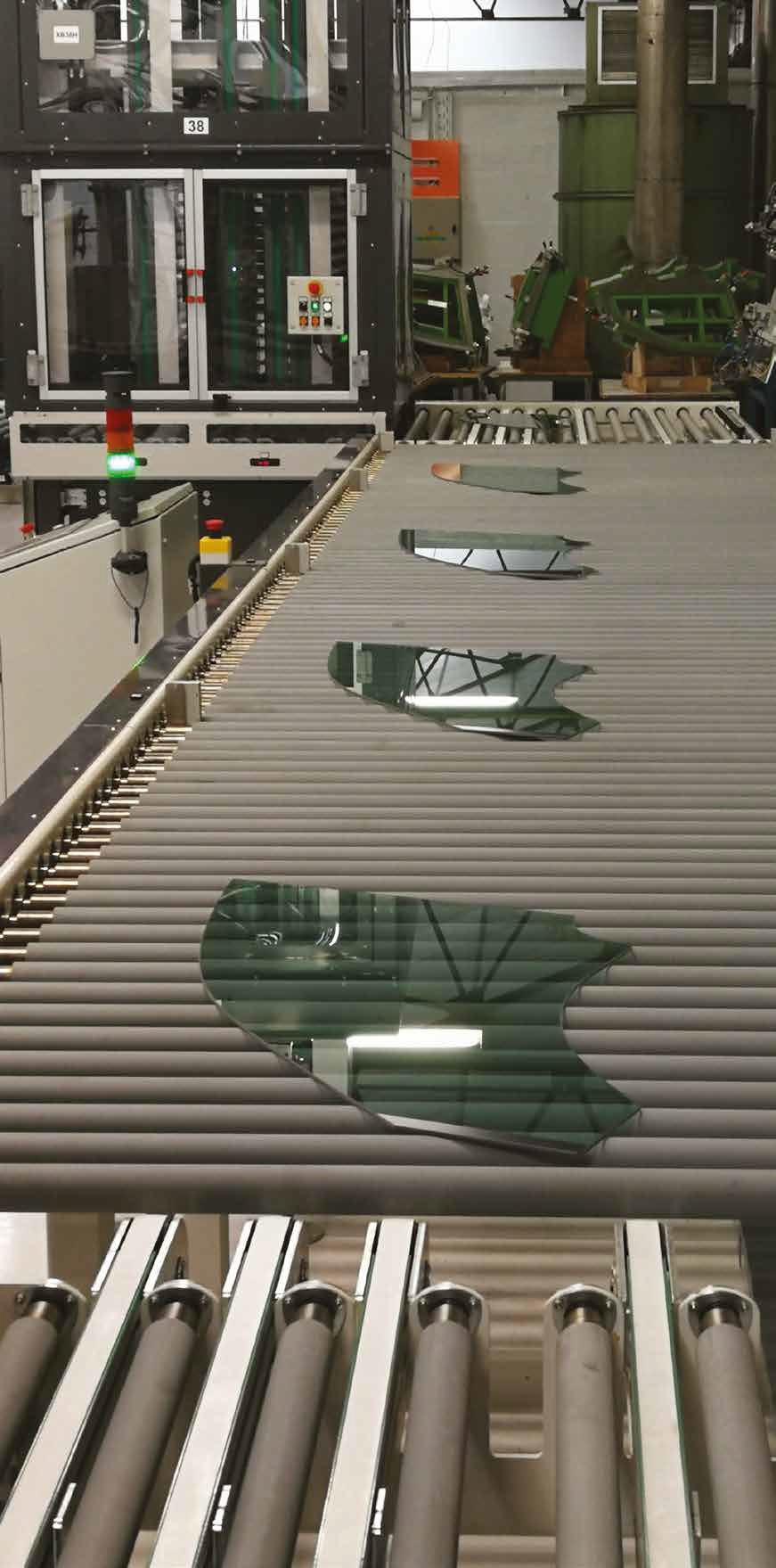

For over 50 years Cugher has been designing and manufacturing machines and systems for silk-screen printing on flat glass, integrating its offer with solutions dedicated to drying, automation, process control, handling, storage and quality control. Cugher is recognized as one of the most innovative and technologically advanced manufacturers, especially in the Automotive market, where it represents the ideal partner offering solutions for all types of glass. Thanks to in-depth knowledge of the production processes in which its technologies are integrated, Cugher responds quickly and effectively to the needs that emerge from the sector, often anticipating them.
INTEGRATED SYSTEMS FOR COATED GLASS
Recent trends in the automotive and architectural application sectors are massively oriented towards the use of low-E glass coating systems so that they can significantly reduce the power of air conditioning systems. Basically, the mechanism takes IR and UV energy from sunlight in order to reduce the demand for air conditioning during the summer period. Cugher Glass, which has always considered the Automotive and Architectural sectors as its production drivers, is constantly in touch with the main players of the sector and focuses its research and development activities on the needs coming from both sectors, sometimes also anticipating these needs.
When coating techniques began to have an important role in Automotive and Architectural


glass production processes, Cugher had, given the incompatibility of these materials with screen printing techniques, to choose between two possible alternatives: to design its lines for screen printing on the opposite side to the coating side, or to make sure that the glass arrives on the printing table with the coating trimmed. In this second case the printing process takes place as usual: therefore nothing changes for the operator except for more attention required for the handling of the glass sheets. On the contrary, if the customer decides to keep the coating on the opposite side to that of the screen printing, the process becomes more complicated. Coated glasses do not withstand the typical mechanical actions of centring, and the glass must therefore be moved with the coating facing upwards until printing. The glass is centred upside down, and then turned over on the shuttle that takes it to the machine. After printing, everything proceeds as usual, apart from the adoption of full rollers to reduce the surface load on the coating.
PRINTING SYSTEMS FOR PAIRED GLASS
Another issue of the Automotive sector is the management of paired inner/ outer glasses: this kind of glass, whether windshields, side- or rear windows, are bent separately using the most modern ‘press-bending’ technology and only later they are paired, otherwise they are bent when already paired with the more traditional ‘gravity’ technology. In the case of ‘gravity’ bending processes, coupling can take place just before the bending furnace – the most widespread solution – or at an earlier stage, immediately after washing the glass arriving from the cutting line. This second solution is adopted to substantially reduce the phenomena of contamination between the different layers. From the screen printing and handling point of view, this solution requires the creation of a more complex line: since paired glasses must be handled with a layer of powder in between them, which makes the two glasses free to slide, the handling and centring systems must be rethought for this particular specification. The whole part of the Roller conveyor for sidelites line dedicated to handling must therefore be designed with particularly delicate acceleration and braking to avoid decoupling the glasses, in particular the screen printing machine must be

designed to be able to centre the pair of glasses on the printing surface that otherwise would not maintain the registration. The machines suitable for this type of process are both those that belong to the J series with belt conveyors, as well as the GB series with shuttle transport. In the case of the J series, the pair of glasses is handled on a belt conveyor, so it is important to pay attention to accelerations. In the case of the GB series, the pair of glasses is pre-aligned and then transferred to the printing table with a shuttle that blocks the two glasses, preventing mutual slippage. In terms of quality the two machines offer exactly the same performance, however with the GB series machines it is possible to save time in handling glasses, optimizing the overall cycle time (180 pieces/hour).
PRINTING SYSTEMS FOR LAMINATED SIDELITES
Sidelite lines require rather high cycle times and machines capable of handling particularly complex and highly asymmetrical glasses. Cugher has always produced screen printing machines capable of handling complex shapes: in the case of automotive side glasses, the difficulty of asymmetrical shapes is added to the complication of the very low thickness of the glasses to be printed. To meet the demand for high standards of acoustic comfort – more and more frequent in the world of luxury cars – Cugher has developed a specific series of roller conveyors that complete the offer of lines dedicated to side windows. The choice of roller conveyors comes from the desire to adopt barrier photocells that improve and simplify stops and centring of thin glasses. Thanks to this Cugher is able to detect and manage very thin glasses with complex shapes, without putting them at risk of impact in critical points such as corner tables, stackers and centring stations.

